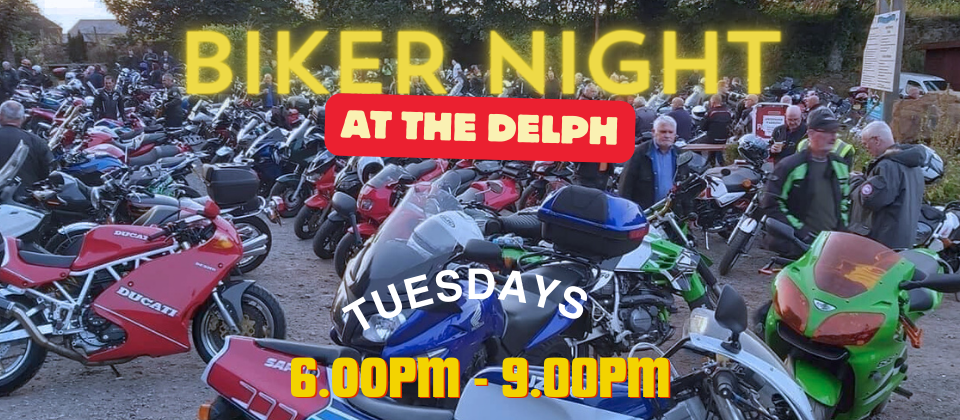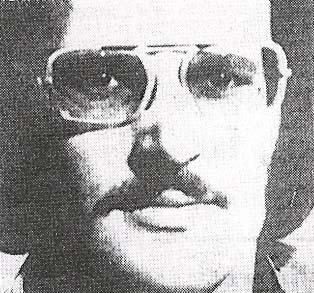'Eccy Delph' was redeveloped into the diving centre from 2000 onwards, here are a few photos
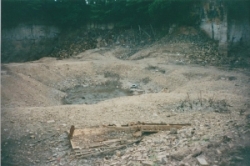
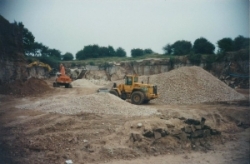
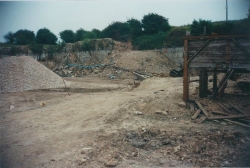
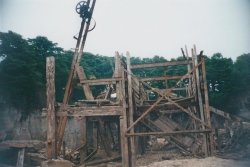
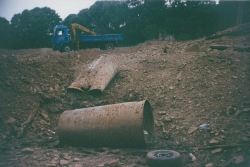
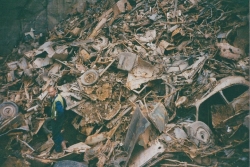
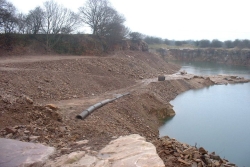
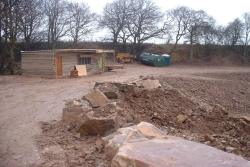
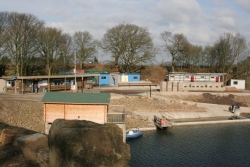
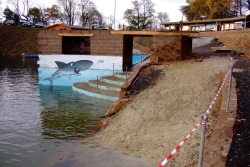
Many thanks to Smudge at ProScuba for providing some of the photos on this page.
October 23-29 2004 Vol 196 No 3363 The fall of Mr Asiaby David LomasTwenty-five years ago, the Mr Asia drug ring came to a bloody end, with the discovery of Aucklander Marty Johnstone's handless, mutilated body in an English quarry. DAVID LOMAS, who has followed the case from the start, revisits New Zealand's most famous crime gang.A mass killer with a glamorous lawyer lover. A harem of attractive young women couriers. A playboy drug baron. And a bunch of hard-nosed ex cons. All Kiwis.Sex, drugs, money and murder – Terry Clark and his Mr Asia gang had it all. By the end of its bloody reign 25 years ago this month, Clark and the Mr Asia syndicate had left corpses strewn across the globe, been responsible for the importation of hundreds of kilograms of heroin into New Zealand, Australia and Britain and had pocketed, in today's money terms, nearly a billion dollars. They had also left thousands of lives in addicted ruin. Over the years the names of Terry Clark, Marty Johnstone, Errol Hincksman, Jim Shepherd, Peter Fulcher, Dennis Williams, Andrew Maher, Alison Dine and Wayne Shrimpton have become legends of New Zealand crime. So, too, have the names of the dead – among them Doug and Isabel Wilson, Greg Ollard and Julie Thielman, Pommy Harry Lewis, Norma Fleet, Maria Hisshion and Tibor Banfy. For a journalist, Clark and the Mr Asia gang was the crime story of a lifetime. I got my first taste of it as a crime reporter on the Dominion, after the Auckland Star broke the story in late 1978. But, as Star reporters, journalists in Australia and England and I were to detail over the next year, that initial Star series only scratched the surface. It revealed nothing of Terry Clark and his cold-blooded murders. Nor did it touch on the true scale of the operation. Mr Asia was a story that never left me. In the early 90s, seeking more details, I often used to drive for four hours to the Tongariro Prison farms near Turangi to visit Peter Fulcher, one of the gang's hard men, as he served more than a decade in prison for his role as the Auckland distributor. Fulcher and I used to sit in the prison yard and he would puff his roll-your-own cigarettes, talk about how he looked after the prison dogs and then candidly tell me about the sackfuls of money he handled as he peddled Clark's drugs. He would coldly dismiss some of the murders committed by Clark as "occupational hazards". And he would talk about greed and the women who threw themselves at the drug baron and happily carried his drugs. Later, when he got home leave, Fulcher and I used to wander the coffee bar scene of Ponsonby Rd and he would muse about a world that had so drastically changed while he languished in prison for what he acknowledged was "my role in bringing in evil". I also learnt from Auckland police their frustrations over the inaction of the police hierarchy. The boys in "bullshit tower" couldn't comprehend a multinational, multi-million-dollar crime group, detectives said, so, as a way of embarrassing resources out of their bosses, they leaked the story to the Star. When TVNZ agreed to air a 25th-anniversary documentary, John Keir and I set off seeking to talk to all those names of long ago. The two key players were, of course, dead. Marty Johnstone, an Auckland menswear shop salesman, had started the Mr Asia group by importing Thai buddha sticks with the help of Singaporean ship's steward "Chinese" Jack Choo. Choo had simply tossed the bagged-up sticks overboard as his ship passed through the Rangitoto Channel. Johnstone, in a waiting boat, picked them up. But Johnstone had teamed up with Clark, a petty thief and sometime police informant from Gisborne. Clark ruthlessly forced himself to the top of the syndicate, eventually ordering Johnstone's murder when a Thailand drug deal went wrong. Clark was convicted of killing Johnstone and later died in prison in England. After a quarter of a century, we believed that people would talk – and many did. But the main villains wouldn't talk on camera. The dapper little "Diamond" Jim Shepherd, although built like a jockey, had ferociously held his own during more than 15 years in Sydney's notorious Long Bay prison. Clark's No 2 – who stepped in to run the drug ring while Clark faced charges in New Zealand – Shepherd said he had never realised how evil heroin was until he went inside for dealing. In prison he saw the addicts created by the Mr Asia gang and it seemed to play on his conscience. "You can put all the drug problems in Australia today down to one man – Terry Clark," Shepherd told us off-camera. Shepherd also talked about Clark's lust to kill, how he had become like the people he supplied heroin to – addicted. But his addiction was the thrill of murder. We also tracked down Errol Hincksman, one of the syndicate's hard men, who sold drugs, kept discipline and was found flaked out after a cocaine high when police raided Clark's London mansion and arrested him for Johnstone's murder. Hincksman ended up serving almost a decade in prison in England for drug dealing. Now back in Auckland, well spoken and with a teenage daughter, he revealed that the syndicate used to import bulk loads of heroin hidden in aircraft fuselage. It was only recoverable when the planes were serviced in Sydney. No airline person has ever been caught. Hincksman hooked up with Clark, like so many of the others, while they did time in Wi Tako prison in the early 70s. He remembered how Clark wanted to be the "Al Capone" of New Zealand – to rule the drug world. Some of the pretty young female couriers, who would pack the top of their heroin-stashed suitcases with soiled underwear and broken children's toys to distract and embarrass Customs officers, now live as respectable housewives. One, who has gained national prominence in sport, boldly denied she was involved, despite an extensive police file that tracks her movements to this day. Police told of driving to Paihia and using a kayak to land secretly in front of the opulent Opua waterfront mansion that Clark was building. There, they had watched and heard Clark and Auckland lawyer Karen Soich making love. In Australia, Justice Donald Stewart, who ran a Royal Commission of Inquiry into the Clark gang, spoke candidly about his investigation for the first time. The old judge, now with both legs amputated, angrily described the corruption he uncovered, inside not just the Australian state police forces but also the federal drug bureau. He bitterly said, "The whole lot could be bought for the price of a hamburger." Some police officers were complicit in murder, knowing that information they sold to Clark would almost inevitably lead the crazed Kiwi to their informers. But the story Stewart most enjoyed telling, in that most basic of Australian ways, was how the whole Mr Asia gang was constantly riddled with gonorrhoea. "They were all rooting each other behind each other's back. It was all going round in a circle – one would get the clap, then the other – then they would give it back to each other … there was a crook doctor down the road here (King's Cross) who almost made his living out of them." Jimmy Smith witnessed his cousin Andy Maher murder Marty Johnstone. Maher had been Johnstone's friend, but his fear of Clark turned out to be stronger than that friendship. Smith, a former Scots Guard, recounted how he vomited as he and Maher tried to destroy all evidence of Johnstone's identity; of taking Johnstone's body back to a garage in Leyton and laying it on the floor, of hacking Johnstone's hands off with an axe, so that no fingerprints would be found. The garage floor still bears the axe scars. Smith also talked about putting a cloth over Johnstone's face and trying to smash his teeth so that dental records would be useless. From police officers I got horrific photos showing the true evil of death. In New Zealand we have for years seen the touched up "death mask" photograph of Johnstone that British police released at the time. The real photo reveals the panic of Maher and Smith. Johnstone's face is battered with blows. The teeth are intact. At Ecclestone Quarry, the police diver who recovered Johnstone's body told me that if Smith and Maher had been one metre further to the left when they dumped the body from a cliff top, it would probably have lain untouched for another 20 years. The body landed on a ledge at a depth of about six metres. The adjacent drop went to 20m and was littered with car wrecks. When the quarry was drained, five years ago, 250 car bodies, neatly stacked by vintage, were pulled from the depths. But for a misaimed throw, Johnstone's body may have lain among the cars for all that time. And Terry Clark may have carried on his killing way. EXPOSÉ: THE REAL MR ASIA, TV1, Wednesday, 8.35pm All content ©2003-2004 APN Holdings NZ Ltd. All rights reserved. |
| Television |
![]()
 |
| Terry Clark - TVNZ |
Expose: The Real Mr Asia
25/10/2004 08:15 PM
When people think of the "Mr Asia" drug syndicate they normally think of New Zealander Christopher Martin Johnstone who was murdered 25 years ago this month.
Johnstone's handless body was discovered in a Lancashire quarry - still with his Chinese "long life" medallion around his neck.
The chance discovery of the body of the man dubbed "Mr Asia" signalled the end of the huge multi-million dollar drugs operation that started in Auckland and ended up spanning the globe.
David Lomas covered the Mr Asia story for The Dominion newspaper. "It was, and still is, the biggest crime story in this country's history," says Lomas. "Six murders, massive supplies of heroin in to three countries, kindergarten teachers as drug couriers, a glamorous lawyer as the bad guy's lover and corrupt Aussie cops- it had everything. But because all the details sort of just dribbled out no-one really out put all in to context."
In The Real Mr Asia David Lomas sets out to tell the full "Mr Asia" story for the first time on television.
He investigates the rise and fall of Terry Clark aka Alexander Sinclair and a host of other aliases - the man who was the real driving force behind the evil drug empire. The Terry Clark story is an almost unbelievable tale of drugs, sex, money and murder.
Lomas tracks down former inmates who shared prison cells with Clark, he speaks to the drug dealers who distributed his marijuana and heroin and interviews police in New Zealand, Australia and the United Kingdom who pursued Clark and eventually convicted him.
Associates of Clark say, as his evil empire grew, he developed a taste for killing people - and as the inevitable cracks began to appear in his organisation, he had to murder more and more people to save himself.
"All told the police say Clark murdered six people, but there are at least three other deaths which could be the work of Clark and his gang," Lomas says.
The other extraordinary feature of the Mr Asia story was the police corruption in Australia that allowed Clark and his syndicate to operate - and thrive.
"In those days the police in New South Wales and Queensland were completely corrupt," says retired judge Mr Justice Stewart, the man given the job of later investigating drug trafficking in New Zealand and Australia.
"It was said at the time you could buy the entire police force of Queensland and New South Wales for the price of a hamburger," Judge Stewart tells Lomas.
The Mr Asia gang was making more money than Clark could ever have imagined - but by the late 1970's the police were closing in.
The murder of Clark's business partner - the playboy Marty Johnstone - in the north of England spelled the beginning of the end.
Screens on Wednesday October 27 at 8.30pm on ONE.
|
|
|
Once it was a beauty spot.
But that was before it became the watery grave of an international drugs dealer. Eccleston Delph, a flooded quarry in the heart of Lancashire, was never meant to reveal its gruesome secret. But the body of Martin Johnstone never hit the bottom. Instead it came to rest on a ledge after the perpetrators of the most notorious deed in the history of crime in the North West, had bundled him over the edge. And there it was discovered - that butchered, hideously scarred body which led disbelieving detectives to the earth's four corners in pursuit of those who would kill to protect a multi million pound drugs empire. ConnectionThis week the Handless Corpse rose once more from the Delph's murky depths. For two days and nights a television crew reconstructed the killing and dumping of Kiwi Martin Johnstone, the man dubbed the Mr Asia of international narcotics smuggling whose ruthless execution 13 years ago put nine behind bars for dealing in drugs and death.The Lancashire connection will be a dramatised by Granada this autumn as part of a Friday night peak-time crime series. Ironically, perhaps, it will be called All Good Friends. Those were the words used in a statement by Preston-born Barbara Pilkington, girlfriend of the man who pulled the trigger. She and killer Andy Maher were indeed good friends with Johnstone and his Lancashire lover Julie Hue. "We examine that friendship and the pressures which finally blew the whole thing apart," says producer Bill Jones |
Drugs, Death and a Grisly Man-huntHe remembers it well. As a newspaper reporter he covered the case in its early stages. Now he watches as two film units bring about the realisation of a project which took him six months to research.
At Leyland in a lock-up garage they recreate the moments in which Johnstone's body was mutilated in the vain hope that even if it was discovered it might never be identified. And at Eccleston Delph - it's actually in neighbouring Heskin - they film the dumping of his heavily weighted body, its discovery by two amateur divers who thought it was a tailor's dummy, and its recovery by police frogmen. Lancashire police have co-operated with the makers. Few police forces, they believe, could have concluded the case in the way Lancashire did. From the time they'd finished there were 180 witnesses from across the globe. "They kept at it like a Jack Russell with a rabbit," says Bill Jones. "It really was an incredible case and it is still a very powerful story." There is a delay in filming because Mike Armitage is in make up. It takes four hours to get him looking.....like death. For Mike, underwater expert and boss of Standish-based Northern Diver, is the corpse of Martin Johnstone for the day. When he finally arrives at the Delph, make-up artists continue to work on him, attaching a sandy wig and various prosthetics. |
These include specially-made and uncannily realistic handless arms which are placed prayer-like across his chest in the manner they were found. While it is all going on he says with unintentional humour: "The tension is killing me."
Bill Jones looks across the water. There is litter and there are rusting cars and vans beneath the surface. One or two fishermen go about their business: "It's an eerie place," he says. Maybe I think that because of what happened here, but there's something weird about it." He reveals that Andy Maher will be played by Vic McGuire, Jack in TV's Bread. In reality Maher, then 27, was given a minimum 20 years after an historic 128-day trial at Lancaster Castle, and remains locked away until the last year of this century. SyndicateBarbara Pilkington and Julie Hue whose mind-boggling statements finally blew the gaffe on a drugs-running operation spanning Australia, New Zealand, Singapore, Thailand and Britain gave evidence for the prosecution.Since then they have been living new lives with new identities. Which leaves one more character from the cast of All Good Friends. He is Terry Sinclair, the hugely wealthy Mr Big on whose orders Maher shot his friend in the head. Johnstone had double-crossed the syndicate. Maher believed his own life would be snuffed out if he didn't shoot Johnstone. So he did - in a layby north of Lancaster. Sinclair, arrested by armed officers during a dawn raid on a London flat, read books in the dock a Lancaster Castle. So powerful was he that he believed he could simply buy his way to freedom. When he died of a heart attack not long into a 20-year sentence at Parkhurst prison in 1983, Lancashire police were immediately suspicious. Says Bill Jones "They had put away this fit-looking guy in his mid forties and he'd suddenly had a heart attack. They felt it wasn't him. They thought he might have been sprung from prison and that someone else had taken his place. That's how powerful he was. "So they went down to look at his body - and they took someone along who knew him very well. It was Sinclair all right, but his hair was white and he'd aged 25 years. There he lay, the multi-millionaire drugs baron whose downfall had begun with the discovery of a handless corpse in a Lancashire quarry off Halfpenny Lane |
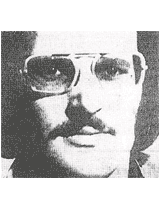 Victim Martin Johnstone 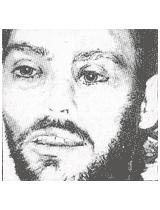 His battered "death mask" 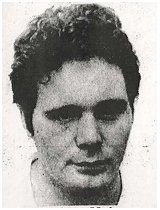 Brutal killer Andy Maher 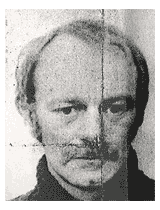 The "Mr Big" Terry Sinclair EXCLUSIVE Story by PETER RICHARDSON |
 PC Arthur Marshall is at the waters edge. He is the man who brought Johnstone to the surface all those years ago. Now, 45, he's still with the police, still diving and still enjoying the life.
"I remember it as a job of work," he says. "We were conscious all the time that we had to preserve all the evidence. These days we could have rigged up a video camera and CID could have watched from the surface "But there was nothing like that then and no one realised the problems we had. There were 140 lbs of weights tied to his legs. It must have been at least two hours before we got him up. He was about 20 to 30 feet down on a ledge. If they'd dropped him just a few feet away I don't think he would ever have been found." Arthur is taking part in the filming, together with colleagues. |
|||
Page 1 of 2

